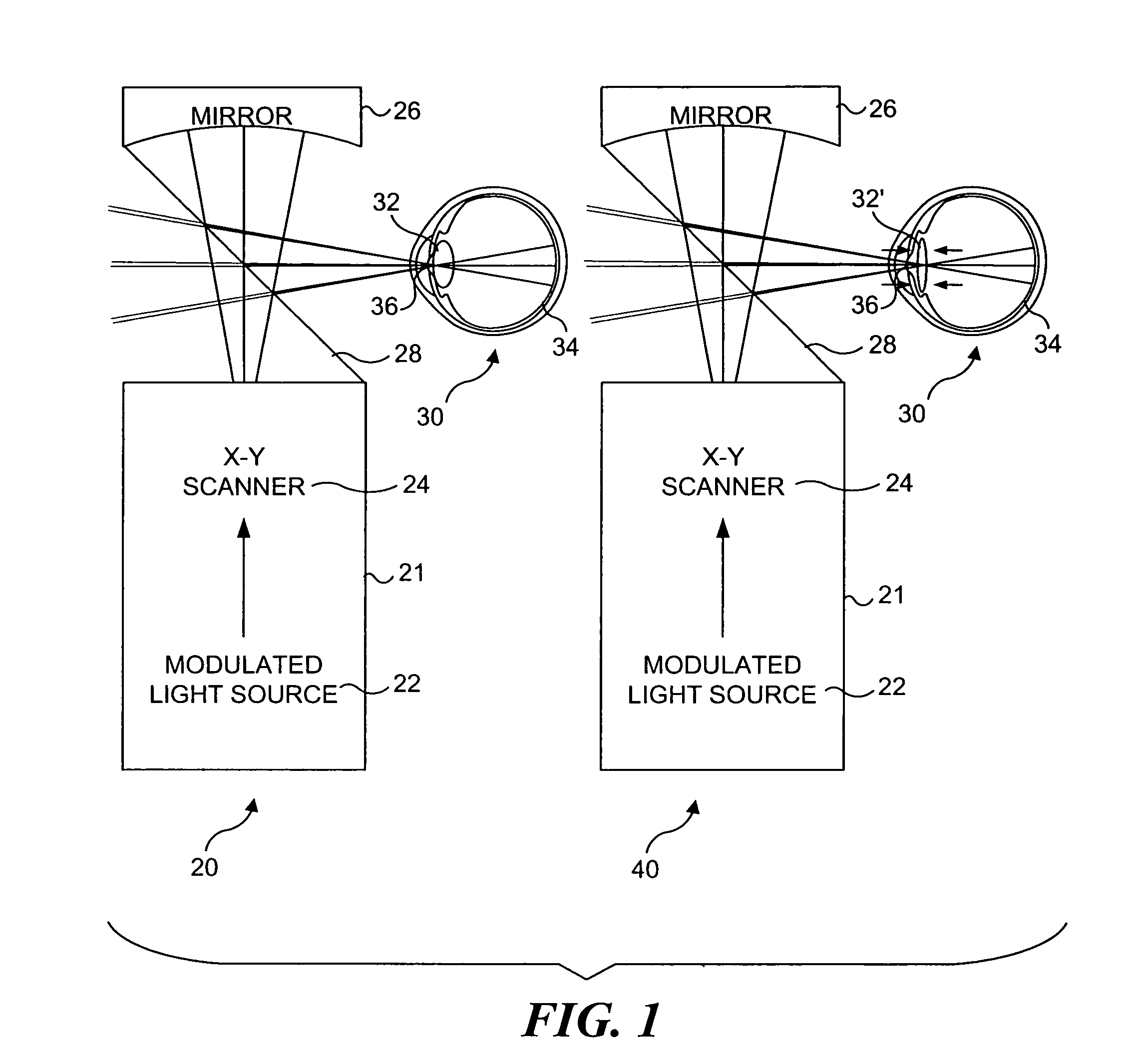Materials and methods for simulating focal shifts in viewers using large depth of focus displays
a technology of depth of focus and display, applied in the field of methods and displays for conveying depth in, can solve the problems of viewers not accurately focusing their eyes on standard (non-stereographic) video displays, the senses do not directly receive 3-d data about the world, and the shift in accommodation reverses direction and slows down, so as to enhance the perceived realism of the display, increase the effect of realism, and increase the interactivity of the display
- Summary
- Abstract
- Description
- Claims
- Application Information
AI Technical Summary
Benefits of technology
Problems solved by technology
Method used
Image
Examples
Embodiment Construction
Construction:
[0032]The following components are needed to implement the present invention: (1) a display with a large DOF; (2) means for the (direct or indirect) measurement of accommodation; and, (3) a computing device that, at a minimum, receives the accommodation measurements, and can affect the input to the large DOF display. Each of these components is discussed in further detail below.
Large DOF Displays:
[0033]Any display with a large DOF can be used in this method. Several displays that fit this description are summarized here, but this does not exclude other possible displays with a large DOF. The provided examples of large DOF displays are not comprehensive, but rather serve as examples to illustrate the general principle of a large DOF display. Other large DOF displays can be used in place of the examples discussed below.
[0034]VRD: The VRD is one type of display that can be used as a large DOF display in the present invention. As shown in FIG. 1, the VRD used preferably com...
PUM
 Login to View More
Login to View More Abstract
Description
Claims
Application Information
 Login to View More
Login to View More - R&D
- Intellectual Property
- Life Sciences
- Materials
- Tech Scout
- Unparalleled Data Quality
- Higher Quality Content
- 60% Fewer Hallucinations
Browse by: Latest US Patents, China's latest patents, Technical Efficacy Thesaurus, Application Domain, Technology Topic, Popular Technical Reports.
© 2025 PatSnap. All rights reserved.Legal|Privacy policy|Modern Slavery Act Transparency Statement|Sitemap|About US| Contact US: help@patsnap.com



